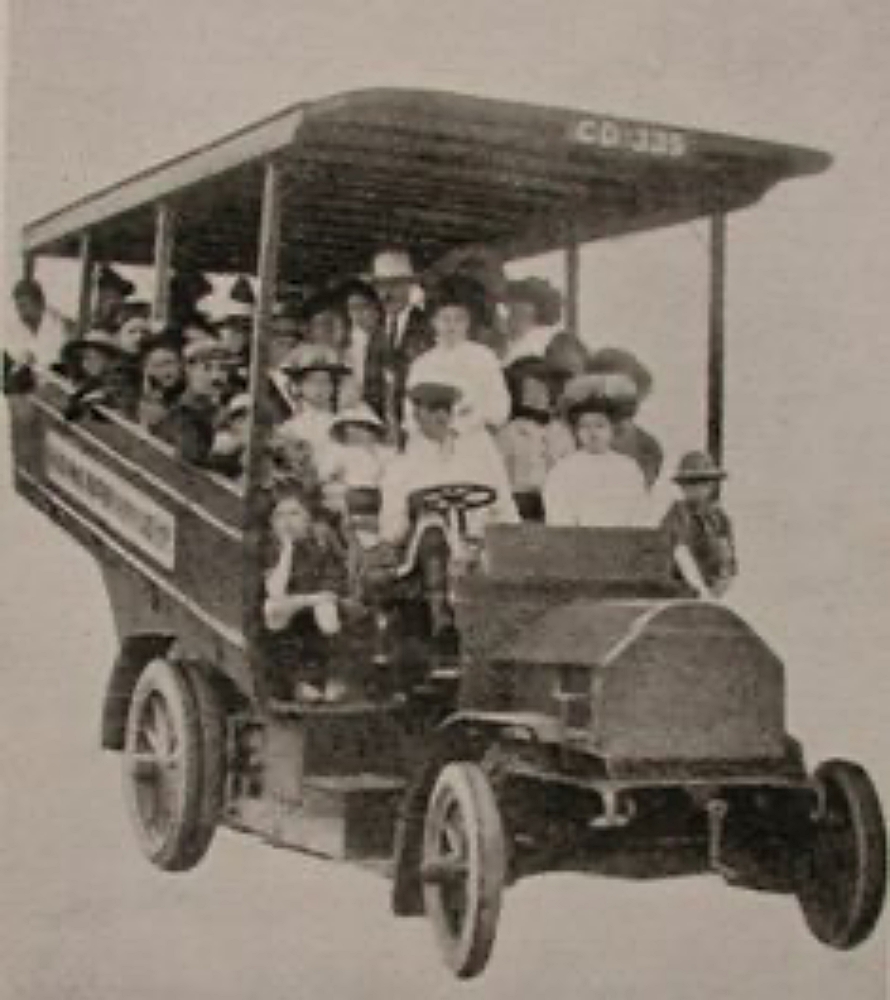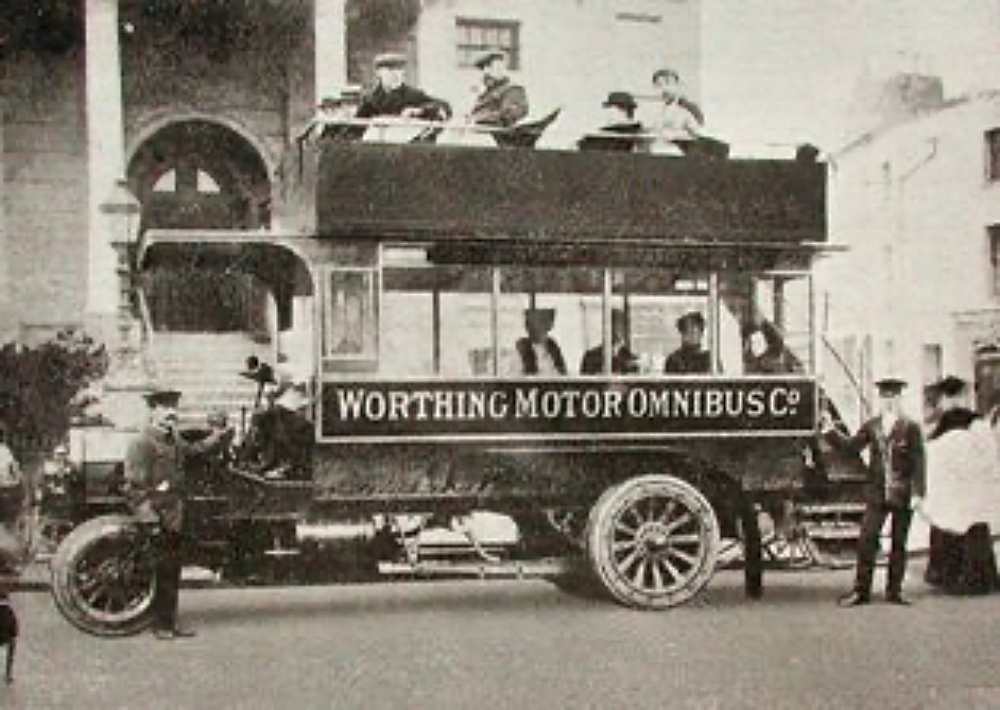The first jolly bus jaunts
BUS route cuts are again making headlines, though this time the excuse is not lack of passengers but the success of the free bus pass scheme for pensioners.

It is being over-used, say the bus operators, who claim that, as a result, the local council is inadequately compensating them.
Looking back to when local buses began, has there been much improvement in the service during the intervening 103 years? Of course the traffic density has greatly increased and there have been quality improvements in the local road network.
It’s true that today’s buses will keep you drier in a heavy downpour, but do they really offer a much better service than the earliest motorbuses, which more often than not ran with surprising regularity, every 15 minutes? EXCITEMENT was in the air early when the newly created Sussex Motor Road Car Ltd began a regular passenger service with their first two motorised buses. That was in 1904 and at first they covered just one route, between Worthing and Pulborough stations, via Findon, Washington and Storrington.
Those first happy bus journeys soon became a favourite treat for a large part of the local populace. It was their introduction to the horseless carriage and one of the highlights was being able to wave to the soldiers training in the large Territorial Army camp at Washington.
Another pleasurable bonus was if the open-air single deck Clarkson steam buses completed the round trip without a breakdown. The problem wasn’t so much with the buses themselves but Worthing’s traditionally “hard” water.
That hard water brought the brief era of the Worthing steam bus to a premature end, by proving near fatal to the flash boilers of their water-fuelled form of propulsion.
The pioneering bus company tried to stave off the inevitable by installing big underground tanks at The White Horse, in Storrington, their plan being to collect more suitable soft rain water for the bus boilers from the hotel’s roof and stables.
Unfortunately it didn’t rain enough that year and after only six months the two steam buses were sold off to the Welsh town of Llangollen and replaced by a Milnes-Daimler single-deck bus.
Fortunately, this one proved so successful the company promptly bought four more.
A group of Worthing tradesmen were so inspired by their success they decided to carve themselves a slice of the action by forming their own Worthing Motor Omnibus Company to run a more localised motorbus service.
They purchased five new (and larger) buses and ran these in competition with the town’s two existing services of horse-drawn buses, still being run by Mr Town and Mr Jay. These ran at regular quarter-hour intervals on two different circuitous routes between Tarring and East Worthing.
By 1905 the Worthing and Sussex motorbus companies had combined and with a fleet of 10 buses were maintaining a regular service linking Worthing with Brighton, Arundel and Pulborough.

These early buses were primitive and suffered so many engine and mechanical failures that by the end of the 1906 financial year the company was showing a big loss.
It was time to call in an expert.
A London consulting engineer, A. D. Mackenzie, together with a second engineer, A.E.Cannon, took over running the Worthing motorbuses in May, 1907, and managed to stop the financial drain.
Unfortunately, they were unable to free the company from the huge debt they had accumulated earlier, so in 1908 the company went into liquidation. Mackenzie struggled on with one bus of his own, servicing a skeleton route between Worthing and Storrington, until the formation of yet another new company, Worthing Motor Services Ltd, with 15 buses, in 1909.
As happened in recent times, following deregulation of bus services, stiff competition (though not necessarily providing a better service) was not far behind.
Demanding a share of the Worthing company’s lucrative Brighton to Worthing route, the Brighton Omnibus Company started a competitive service in the opposite direction.
The struggle for passengers on this 10-mile run became so demanding of money, staff and machines that before 1912 was over, Worthing was forced to surrender the Worthing-Brighton service in its entirety to the Brighton company.
Worthing Motor Services, meanwhile, decided to buy up the two Worthing horse bus services that perhaps surprisingly, had continued operating throughout the motorbus “wars”.
The horses were put out to grass and replaced with motor vehicles.
Yet another amalgamation was just around the corner and in 1915 all the town’s buses became part of Southdown Motor Services, which continued until that, too, was taken over by Stagecoach in the closing years of the last century.